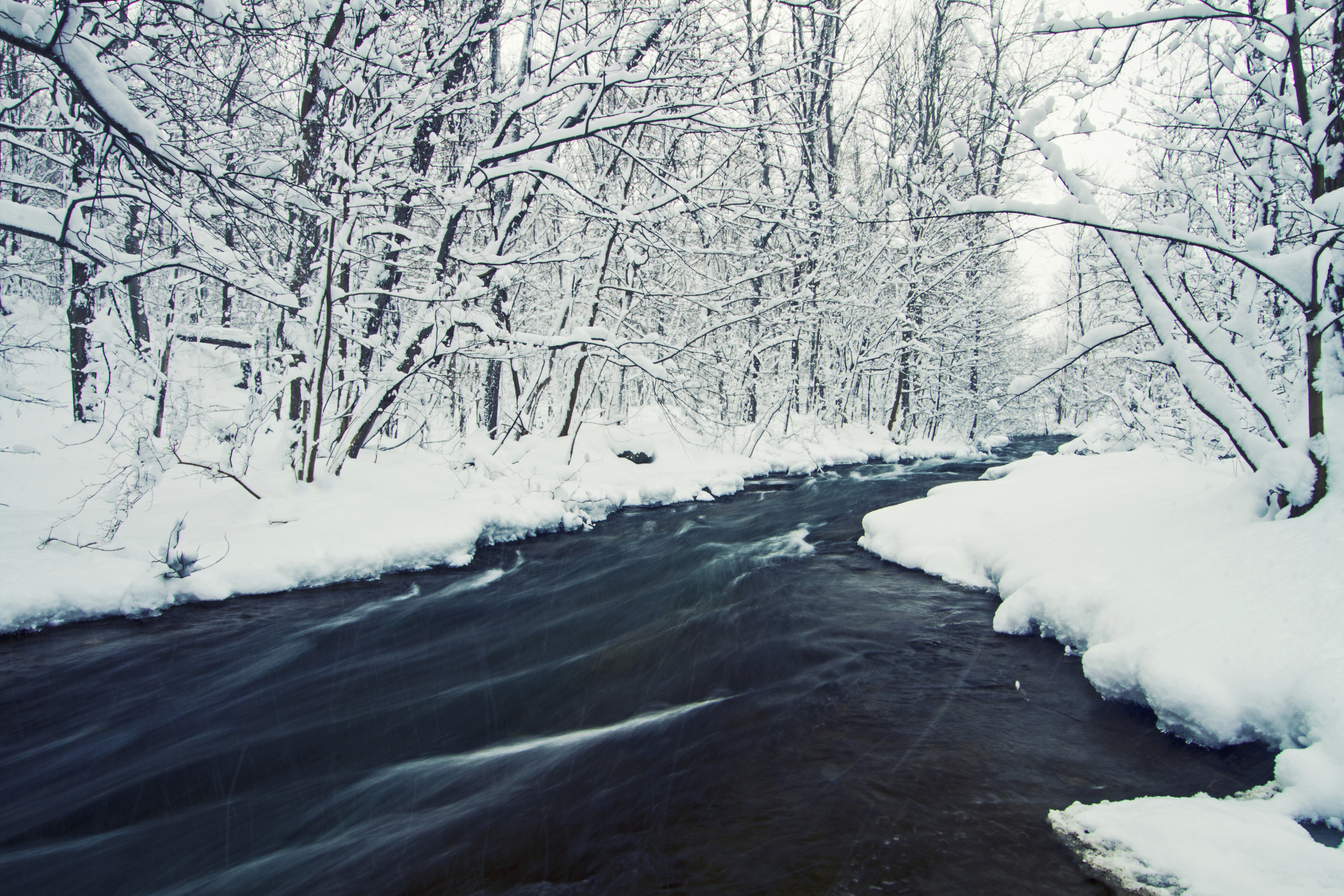Across North America, streams and rivers are becoming saltier, thanks to road deicers, fertilizers, and other salty compounds that humans indirectly release into waterways. At the same time, these waterways are becoming more alkaline.
A new study, published in the Jan. 8 early edition of the Proceedings of the National Academy of Sciences, assesses long-term changes in freshwater salinity and pH at the continental scale. The research was conducted by scientists at the University of Connecticut, University of Maryland, Cary Institute of Ecosystem Studies, the University of Virginia, and Chatham University.
Salt content and pH are fundamental aspects of water chemistry, so these are major changes to the properties of freshwater. — Gene Likens
“Our study is the first to document a link between increased salinization and alkalinization at the continental scale. Until now, we didn’t fully appreciate the role that different salts play in altering the pH of streams and rivers of our country,” says study co-author Gene Likens, distinguished research professor at the University of Connecticut and president emeritus of the Cary Institute of Ecosystem Studies. “Salt content and pH are fundamental aspects of water chemistry, so these are major changes to the properties of freshwater.”
Salty, alkaline freshwater can create big problems for drinking water supplies, urban infrastructure, and natural ecosystems. For example, when Flint, Michigan, switched its primary water source to the Flint River in 2014, the river’s high salt load combined with chemical treatments to make the water more corrosive, causing lead to leach from water pipes and creating that city’s well-documented water crisis.
The study, based on data recorded at 232 U.S. Geological Survey monitoring sites across the country over the past 50 years, shows significant increases in both salinization and alkalinization. It also suggests a close link between the two properties, with various different salt compounds combining to do more damage than any one salt on its own.
The analysis has implications for freshwater management and salt regulation strategies in the United States, Canada, and beyond.
“We created the name ‘Freshwater Salinization Syndrome’ because we realized it’s a suite of effects on water quality, with many different salt ions linked together. We didn’t know that before,” says Sujay Kaushal, a professor of geology at UMD and lead author of the study. “Many people assume that when you apply salt to the landscape, it just gets washed away and disappears. But salt accumulates in soils and groundwater and takes decades to get flushed out.”
According to Kaushal, most freshwater salinization research has focused on sodium chloride, better known as table salt, which is also the dominant chemical in road deicers. But in terms of chemistry, salt has a much broader definition, encompassing any combination of positively and negatively charged ions that dissociate in water. Some of the most common positive ions found in salts – including sodium, calcium, magnesium, and potassium – can have damaging effects on freshwater at higher concentrations.
“These ‘cocktails’ of salts can be more toxic than just one salt, as some ions can displace and release other ions from soils and rocks, compounding the problem,” says Kaushal, who also has an appointment in UMD’s Earth System Science Interdisciplinary Center. “Ecotoxicologists are just now beginning to understand this.”
The current study is the first to simultaneously account for multiple salt ions in freshwater across the United States and southern Canada. The results suggest that salt ions, damaging in their own right, are driving up the pH of freshwater as well, making it more alkaline. Over the time period covered by the study, the researchers concluded that 37 percent of the drainage area of the contiguous United States experienced a significant increase in salinity. Alkalinization, which is influenced by a number of different factors in addition to salinity, increased by 90 percent.
The root causes of increased salt in waterways vary from region to region, Kaushal says. In the snowy Mid-Atlantic and New England, road salt applied to maintain roadways in winter is a primary culprit. In the heavily agricultural Midwest, fertilizers – particularly those with high potassium content – also make major contributions. In other regions, mining waste and weathering of concrete, rocks, and soils release salts into adjacent waterways.
In the water-starved desert Southwest, where salt concentrations have historically been very high, researchers documented an overall decrease in salinity over time. The researchers attribute this decrease to a variety of factors, including changes in land and water use, coupled with an effort on the part of Western state and local governments to reduce salt inputs and improve water resource management strategies. For example, in 1973, the seven Western states included in the Colorado River Basin created the Colorado River Basin Salinity Control Forum to support salinity control efforts.
Researchers also note similar issues with the application of fertilizers in agricultural settings. In many cases, targeting fertilizer applications to the right amount at the right time of the season can help reduce the overall output of salts into nearby streams and rivers. The researchers also note that more careful urban development strategies – primarily building further from waterways and designing more effective stormwater drainage systems – can help reduce the amount of salt washed away from weathered concrete.
This work was supported by the National Science Foundation (Award Nos. EAR-1521224, DEB-1027188, DEB-1119739, and CBET-105850), the U.S. Geological Survey, the Hudson River Foundation, the Chesapeake Bay Program, and the Maryland Department of Natural Resources. The content of this article does not necessarily reflect the views of these organizations.



